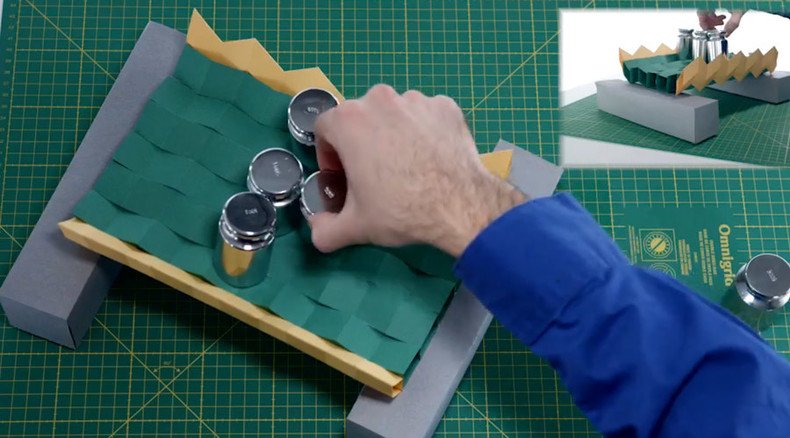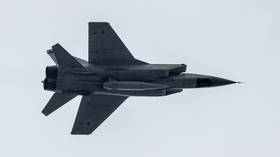100-fold: Origami planes may become reality as new technique makes paper much stronger

A new form of origami can turn paper into a structure more than two orders of magnitude (or about 100 times) stronger than the material itself, opening up new possibilities in engineering and architecture.
A trio of engineers may revolutionize the way we build things with their paper-folding discovery.
Based on the 1970s Miura-ori technique, the zippered tube is the brain child of Illinois graduate researcher Evgueni Filipov, Georgia Tech Professor Glaucio Paulino and University of Tokyo Professor Tomohiro Tachi.
The Miura-ori, named after its creator Japanese astrophysicist Koryo Miura, is a way of folding a sheet of paper into a much smaller area in one smooth motion. Miura came about the design while looking for a smarter way of folding solar arrays in space. During the folding process, every individual square remains flat, which makes the technique useful for folding rigid materials.
The zippered tube concept takes the technique into the future by going 3D, gluing together several Miura-folded sheets to create a tube structure. As you can see in the video, the tube structure is still flexible, however it changes shape only in pre-described ways. The engineers then further complicated the design, adding more tubes to create a honeycomb-like structure, which, according to them, can support tremendous weight and remain flexible at the same time.
“The geometry is what really plays a role,” Paulino said. “We are putting two tubes together in a strange way. What we want is a structure that is flexible and stiff at the same time. This is just paper, but it has tremendous stiffness.”
Yet the main Miura-ori idea still applies: the shape can fold into a very small design. This first and foremost opens up new horizons for transportation of complex 3D structures making it that much easier by just folding them into a 2D shape.
Paulino points out the possibility of quickly assembling emergency shelters and bridges in case of a natural disaster.
Engineers have turned to origami before, mostly for aid in the field of space exploration. However the zippered tube may change things for those of us who keep their feet firm on the ground, far away from outer space.
READ MORE New origami-style robot can assemble itself, walk
Potential everyday uses for the zipper tube include a wide range from robotic arms and construction cranes to pop-up furniture. The researchers plan to apply their techniques to other materials like plastic and metal panels with hinges.
The idea is also to test large-scale constructions and microscopic structures that may later play a role in biomedical devices or robotics.












